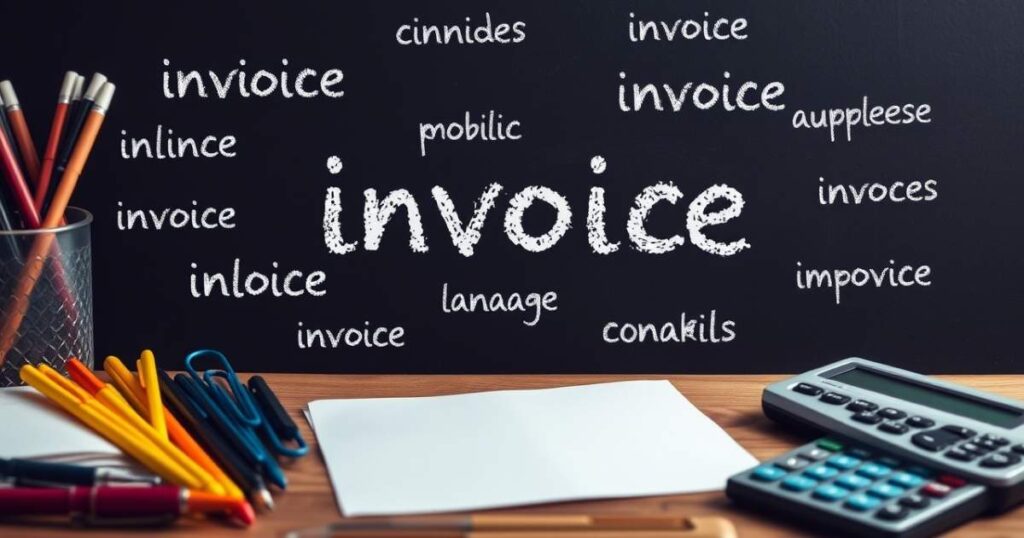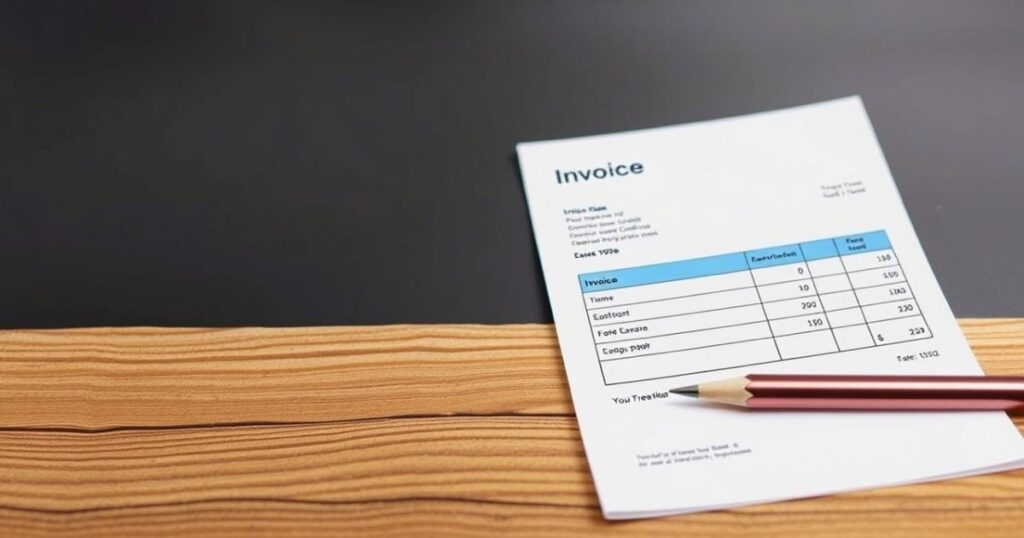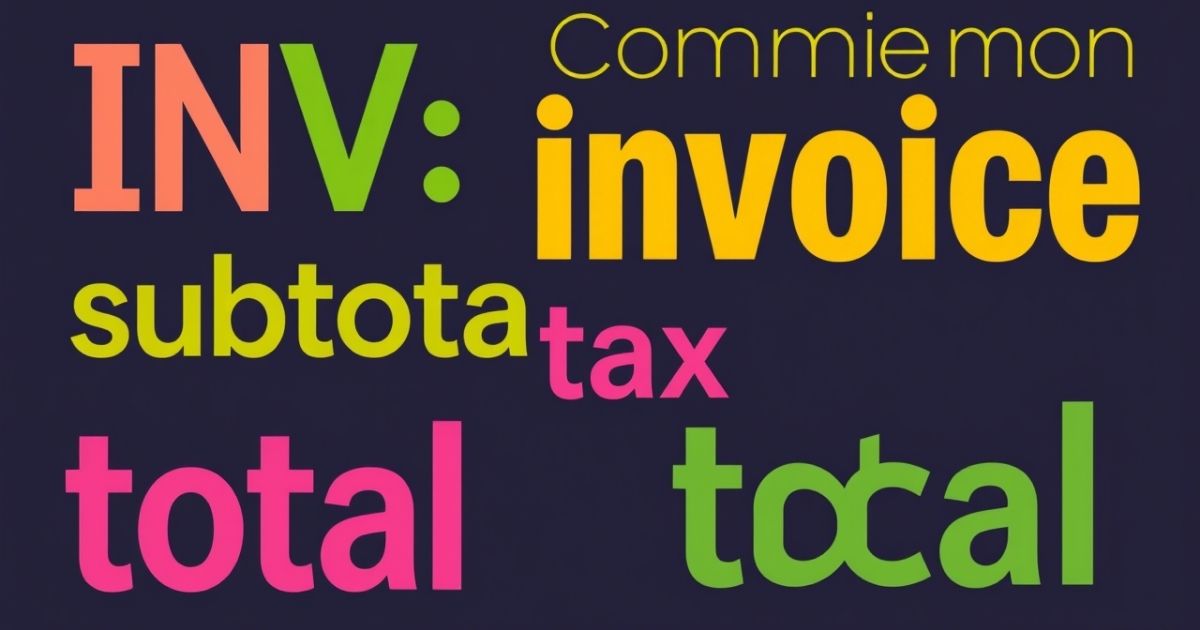The abbreviation for invoice is a helpful way to simplify financial documents and communication. Instead of writing out the full word invoice, many people use the abbreviation “Inv.” in emails, spreadsheets, and accounting records. This invoice abbreviation saves time and space while ensuring clarity in various business settings. It’s especially useful when referring to multiple invoices at once, such as in internal notes or transaction logs. If you’re asking about the sales invoice abbreviation, it’s typically the same “Inv.”, unless the context demands more detail.
You might also wonder, how do you spell invoice when using an abbreviation. The full word invoice is always spelled the same, but the short form “Inv.” can be used in informal situations. When looking for an invoice term for short crossword, “Inv.” might come up as a potential answer. Other invoice abbreviations may be used depending on specific needs, but “Inv.” remains the most common and widely accepted. Whether in emails or accounting logs, the abbreviation for invoice streamlines communication and makes record-keeping easier.
What is the Abbreviation for Invoice?
The short abbreviation for invoice is “Inv.” It’s commonly used in financial documents, business records, and accounting systems to save space while maintaining clear communication.
This abbreviation keeps records concise and easy to understand without sacrificing important details.
For example, you might come across:
- “Inv. #5678” in an invoice tracking system.
- “Kindly process Inv. 3021 by Friday.”
- “The payment for Inv. 7890 is overdue.”
Using “Inv.” is a simple way to make record-keeping more efficient. Whether you’re handling paperwork or digital logs, this abbreviation helps keep things organized and easy to track, especially when managing multiple invoices each month.
What Does Invoice Mean in Different Contexts?

The meaning of invoice stays consistent, but its application differs depending on the context:
- In Business: An invoice acts as a request for payment for products or services provided. It outlines the cost and payment terms.
- In Accounting: It’s a crucial document that records transactions and helps businesses track income, expenses, and taxes.
- In Legal Contexts: An invoice serves as proof of a business transaction, often used in disputes or when proving a debt.
- In Freelancing or Service-Based Work: Freelancers use invoices to bill clients for work completed, detailing hours worked, rates, and total due.
- In E-Commerce: It’s an electronic record of a purchase made online, listing items bought and payment information.
In each scenario, the invoice represents an official record of what’s owed and usually includes the terms of payment, such as due dates and how to settle the bill.
Definition, Pronunciation, and Example of Invoice
An invoice is a document issued by a seller to a buyer, indicating the products or services provided, their quantities, prices, and the total amount due for payment. It typically includes payment terms, such as the due date and how the payment should be made.
Pronunciation:
Invoice is pronounced as:
/ˈɪn.vɔɪs/
You can break it down as:
IN-vois (the “in” sounds like “in,” and “vois” rhymes with “voice”).
Example:
- “I received the invoice for the consultation, and the payment is due by next Friday.”
- “Please review the invoice for services rendered and let us know if you have any questions regarding the charges.”
How to Pronounce Invoice
The word “invoice” is pronounced as:
/ˈɪn.vɔɪs/
Here’s how you can break it down:
- The first syllable, “IN,” sounds just like the word “in” (with a short i sound).
- The second syllable, “VOICE,” sounds like the word “voice,” with the long oi sound, which rhymes with “choice” or “noise.”
So, when you say it, it should sound like “IN-vois” — emphasizing the first syllable, and keeping the second syllable smooth and quick.
Short Abbreviation for Invoice: Where and When to Use It
Now, when and where should you use “Inv.”? Here’s a simple guide. You’ll commonly use the abbreviation in:
- Invoice logs for quick reference to multiple records
- Business emails for concise communication
- Receipts when detailing payments
- Financial statements where space is limited
For example, when you’re managing invoices in a spreadsheet or communicating with clients, “Inv.” helps streamline the process while keeping things organized and easy to read.
Just make sure your audience understands it most people working in business or finance will recognize “Inv.” as the shorthand for invoice.
Related Guide:
Habibi Meaning: Uses, Examples, and Origin
Acronym for Invoice: Does It Exist?
An acronym for invoice doesn’t really exist in the same way abbreviations like “CEO” for Chief Executive Officer do. However, “Inv.” is a commonly used abbreviation (not an acronym) to refer to invoice in business contexts.
An acronym typically uses the first letter of each word in a phrase (like NASA for National Aeronautics and Space Administration), whereas “Inv.” is just a shortened form of invoice and doesn’t follow that format.
So, while there isn’t a formal acronym for invoice, “Inv.” works as a simple, widely recognized abbreviation to keep things concise in records, emails, or financial documents.
Other Examples of the Word Invoice in Context
Here are some other examples of the word invoice used in different contexts:
- In Business Transactions:
- “Please ensure that you send the invoice to the client before the end of the day.”
- “The invoice for the consulting services has been sent and is due within 30 days.”
- In Accounting:
- “I need to check the invoice against the purchase order to ensure all details match.”
- “The accountant has recorded all the invoices from last month for reconciliation.”
- In Legal Contexts:
- “The invoice served as proof of the transaction in the court case.”
- “If there is any dispute over the invoice, we will need to address it legally.”
- In Freelancing:
- “I just sent my client the invoice for the completed design work.”
- “Don’t forget to include your payment terms on the invoice.”
- In E-commerce:
- “You’ll receive an invoice via email once your order has shipped.”
- “The invoice attached to your order includes all the details of your purchase, including taxes.”
- In Customer Service:
- “We apologize for the delay, and your invoice will be sent out tomorrow.”
- “Can you please provide the invoice number so we can locate your order?”
These examples show how invoices are used in various settings, from business transactions to legal disputes, helping maintain clear records of payments and services provided.
Synonyms for Invoice

- Bill
- Statement
- Receipt
- Charge
- Account
Examples:
- “The bill for your dinner is ready to be paid.”
- “Please check the statement for all your recent transactions.”
- “I received the receipt for the items I purchased online.”
Antonym for Invoice
The antonym for invoice would generally be terms that represent the opposite of requesting payment. Here are a few possible antonyms:
- Payment : When the payment is made, it’s the completion of the transaction, opposite of receiving a request (invoice).
- Refund : A return of money, typically when a transaction is reversed or canceled.
- Credit : When an amount is credited back to a customer, it essentially negates the need for an invoice.
These terms represent actions or outcomes that are essentially the opposite of issuing an invoice, which is a request for payment.
The History of the Word Abbreviation for Invoice
The word “invoice” comes from the Latin word “inviare”, which means “to send in” or “to dispatch.” Over time, this evolved into the Old French word “envoier” (meaning to send) and eventually the English word “invoice” in the 16th century, which referred to a list or detailed statement of goods shipped, along with their prices, sent by the seller to the buyer.
The abbreviation “Inv.” likely came about in the 19th century or earlier as businesses sought ways to simplify and streamline their records. Abbreviations were essential in accounting and business practices to save time and space, especially when working with large volumes of paperwork. “Inv.” was adopted for its clarity and easy recognition, making it a widely used shorthand in invoices, accounting logs, and business communications.
Though the exact origin of the abbreviation is unclear, it’s likely that as commerce became more complex, especially with the rise of industrialization and global trade, shorthand terms like “Inv.” became vital in speeding up processes and improving efficiency in written records and financial documents.
When to Use the Abbreviation for Invoice

When should you abbreviate “Inv.” instead of spelling out the whole word? It depends on the context and formality of the document:
- Use “Inv.” in informal or internal documents, like emails, spreadsheets, or quick notes, where space is limited, and the meaning is easily understood.
- Spell out “Invoice” in formal documents, such as official contracts, customer-facing materials, or legal agreements, to avoid any confusion and maintain professionalism.
- If you’re unsure, it’s safer to spell out the word “Invoice” in more formal settings to ensure clear communication and avoid ambiguity.
Examples of the Word and Abbreviations in Context
Here are some examples of the word “invoice” and its abbreviation “Inv.” used in context:
Examples of “Invoice”:
- Formal Document:
- “Please find the attached invoice for the services rendered last month.”
- “Please find the attached invoice for the services rendered last month.”
- Business Transaction:
- “The client has requested a copy of the invoice for their records.”
- “The client has requested a copy of the invoice for their records.”
- Email Communication:
- “I will send over the invoice for the recent purchase by the end of the day.”
- “I will send over the invoice for the recent purchase by the end of the day.”
Examples of “Inv.”:
- Accounting Record:
- “Please refer to Inv. 1023 for the payment details from last month.”
- “Please refer to Inv. 1023 for the payment details from last month.”
- Email Reminder:
- “This is a friendly reminder to settle Inv. 1207 by the due date.”
- “This is a friendly reminder to settle Inv. 1207 by the due date.”
- Internal Notes:
- “All outstanding Inv. numbers need to be reviewed by the end of the week.”
These examples show how “invoice” is used in more formal or detailed contexts, while “Inv.” is handy for shorter, quicker communication.
FAQ’s
What is the purpose of shortening invoice terms?
Using short forms like Abbreviation for Invoice makes financial communication quicker and more efficient, especially in busy accounting or business environments.
When is it appropriate to use invoice abbreviations?
You should use abbreviations for invoices in informal settings, like emails or internal notes, where space is limited, and everyone understands the meaning of Abbreviation for Invoice.
How can abbreviating invoices help with organization?
Abbreviating invoice details in spreadsheets or records keeps everything neat and tidy, helping you stay on top of your financial documents with Abbreviation for Invoice.
Does shortening invoices affect formal communication?
In formal documents, spelling out “invoice” is clearer, but using Abbreviation for Invoice works well in casual communication or internal business records.
How do abbreviations impact accounting practices?
In accounting, using Abbreviation for Invoice helps streamline workflows, making it easier to track payments and ensure efficient record-keeping for businesses.
Conclusion
The abbreviation for invoice is a simple yet effective way to streamline your business communications. Whether you’re using it in accounting records, emails, or spreadsheets, the invoice abbreviation helps save time and keeps everything organized. The most common short form is “Inv.”, which works well for both sales invoice abbreviation and general references to invoices. It’s important to remember that while “Inv.” is convenient for informal settings, the full word invoice should be used in more formal documents.
If you’re ever unsure about the invoice term for short crossword, chances are “Inv.” is the answer you’re looking for. Understanding invoice abbreviations can make your work more efficient, but always ensure the meaning is clear to your audience. So, using the abbreviation for invoice is a great tool to enhance productivity, but be mindful of when and where to use it for maximum clarity and professionalism.

Atlas Reid is an experienced administrator with 5 years of expertise in managing operations, streamlining processes, and ensuring efficiency. Skilled in leadership, organization, and problem-solving to drive business success.








